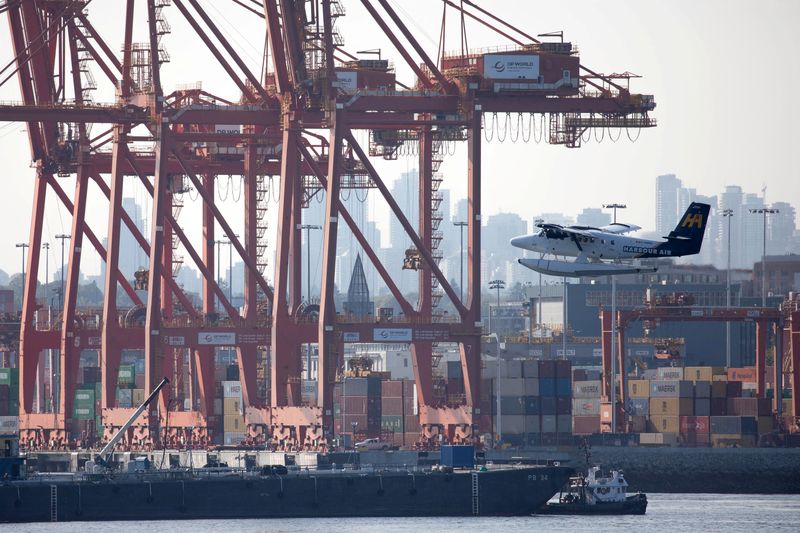By Ismail Shakil, Promit Mukherjee
OTTAWA (Reuters) -Canada recorded a bigger-than-expected trade deficit of C$1.1 billion ($806 million) in August, its sixth consecutive monthly shortfall, as imports rose while exports declined, Statistics Canada data showed on Tuesday.
Analysts polled by Reuters had forecast a C$500 million deficit in the month. July's trade balance was revised to a C$287 million deficit from a surplus of C$684 million initially reported.
Total exports fell 1% in the month, mainly on lower crude oil prices, and pulp and paper exports. Imports in the month were up 0.3%, driven by motor vehicles and parts, as well as industrial machinery, equipment and parts, Statscan data showed.
By volume, exports rose 0.1%, indicating softer prices of exported goods, and imports were up by 0.4%.
"We were not expecting a great month for Canada as energy and commodity prices were depressed in August," said Stuart Bergman, chief economist at Export Development Canada, adding the current rise in crude prices could be helpful for exports in the coming months.
The price of Brent crude has risen by almost 9% in the last 30 days, but they are still 14% below the peak seen last year.
A strong Canadian dollar also chipped away at the competitiveness of the country's exports, Bergman said.
Tuesday's trade report comes amid growing concerns of an economic slowdown in Canada. Data last month showed that the economy likely stalled in August and was on track to fall short of the Bank of Canada's growth forecast for the third quarter, supporting the case for a super-sized interest rate cut in October.
Money markets see almost a 75% chance of a rate cut of 25 basis points this month, which would be the fourth one in a row after the BoC started its rate trimming cycle in June.
The Canadian dollar was down 0.21% to 1.3644 against the U.S. dollar, or 73.29 U.S. cents, at 1310 GMT. Yields on two-year government bonds were up 1.3 basis points to 3.41%.
Energy products, primarily export of crude oil, were the biggest drag on exports in August, mainly due to cheaper crude oil, as concerns over oil demand weighed on prices, the statistics agency said.
Exports of forestry products and building and packaging materials also fell, weighed down by lower exports of pulp and paper to China and the United States. The decrease in exports of pulp and paper may have been due to rail transport work stoppages in Canada in August, Statscan said.
Partially offsetting those declines, exports of motor vehicles and parts, and farm, fishing and intermediate food product categories rose in the month.
The motor vehicles and parts product category was the biggest contributor to the rise in total imports, coinciding with higher production of light trucks and sport utility vehicles in the United States in August, Statscan said.
Imports from the United States - by far Canada's largest trading partner - increased 0.9% in the month while exports were down 4.3%.
Other contributors to the increase in total imports were industrial machinery, equipment and parts, while declines in consumer goods - mainly pharmaceuticals - partly offset the gains.

Overall, six of 11 export product sections posted declines and six of 11 import product sections rose.
($1 = 1.3640 Canadian dollars)